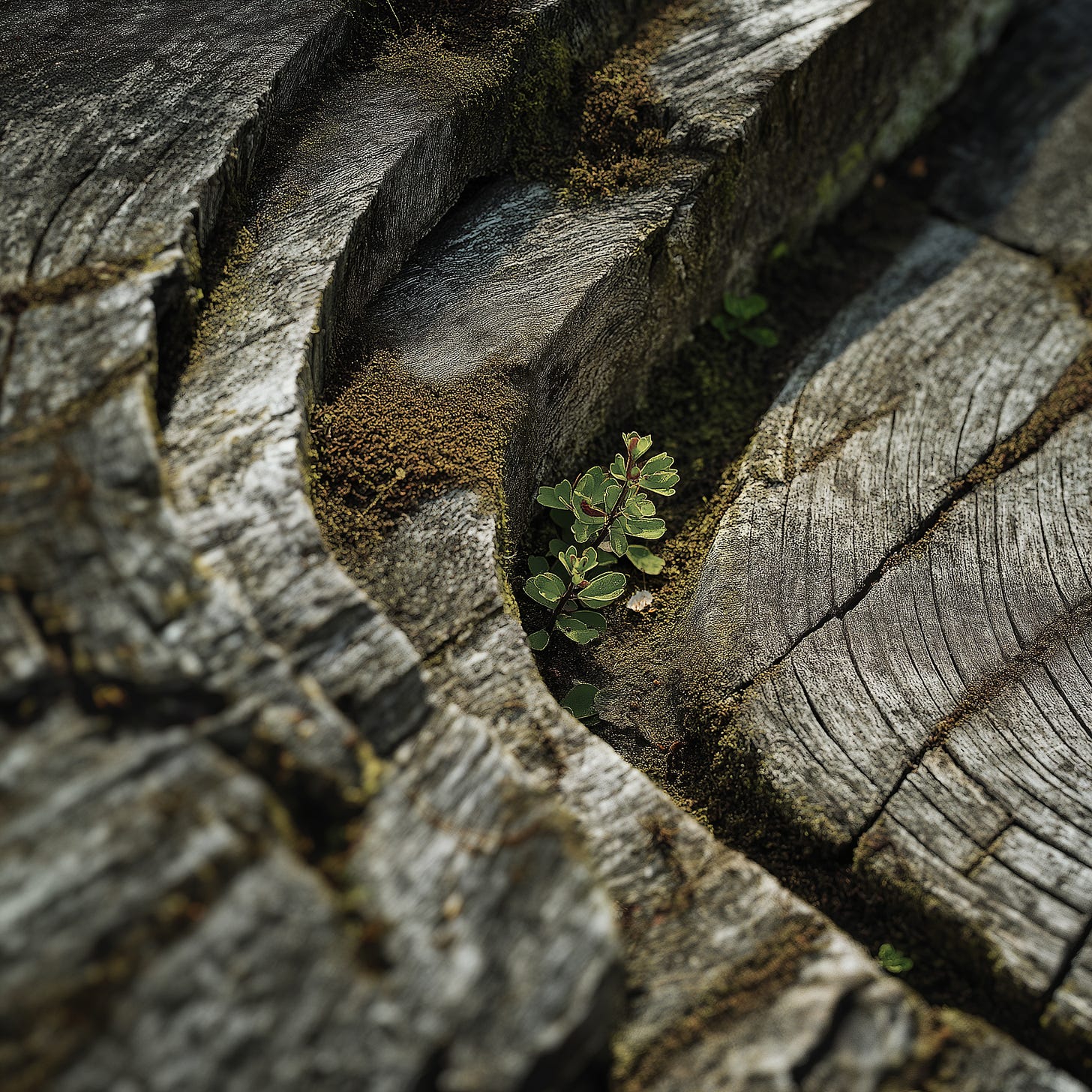On the Difference Between Living and Existing
Notes on waking up inside your own life
More than a decade ago, I spent my final semester of college arranging photographs of strangers into letters. Some faces radiated alertness, caught mid-laugh, mid-argument, mid-epiphany. Others stared past the camera with the glazed look of the chronically elsewhere. Together, they spelled out Oscar Wilde's observation:
"To live is the rarest thing in the world. Most people exist, that is all."
The project is long gone, but the question it posed has only sharpened with time:
What distinguishes truly living from simply existing?
Lately, I've been experimenting with intimacy, not solely in its sexual or romantic dimensions, but as a practice of presence. How fully can I inhabit the moment I'm in? Each sensation, each flicker of awareness, each subtle shift in the body's weather. The goal isn't to transcend what arises but to meet it completely, without the reflexive flinch we call being triggered.
In this practice, I've noticed with new clarity how different people illuminate different chambers within us. Last week, coffee with M. turned me into someone I barely recognized: a raconteur, spinning stories I'd forgotten I knew. But dinner with K. that same evening found me silent, watchful, noting the way she rearranged her silverware three times before speaking. Same day, same body, entirely different inhabitant.
Of course, we know this intellectually, that we are multitudes, that context shapes expression. But there's knowing, and then there's seeing it happen in real time: how one friend draws out the jokester while another summons the artist; how certain presences make us expansive while others make us contract. We are, it seems, less solid than we imagine, more like those children's toys where different colored pegs pop up and down, a constantly shifting topography of self.
The real developmental work, I've come to believe, at least for those of us not called to monastic life, happens precisely here, in the crucible of relationship. Each interaction becomes a mirror, each trigger a teacher. The question isn't how to avoid being activated but how to remain awake when we are.
How do we rest in what the contemplatives call the ocean of awareness, even if the waves crash over us?
This is where living and existing reveal themselves as opposite poles on the spectrum of consciousness. To exist is to follow the grooves already carved for us, to mistake the path for the only possibility. It's the sleepwalker's journey through predetermined days. To live, by contrast, is to recognize the groove itself, to see that even our most automatic responses are, in fact, choices. It's to wake up inside your own life and discover that intimacy with others begins and ends with intimacy with ourselves.
Most of us, as Wilde knew, will settle for existence. But occasionally, in those moments when we're truly meeting another person, truly meeting ourselves, something shifts. The groove becomes visible. The automatic response pauses mid-formation. And for a second, maybe two, we're not sleepwalking at all.
We're here, electric and awake.
Emergence with Rachel Weissman is a weekly exploration of the interconnections between consciousness, technology, and planetary flourishing.
If you find this writing valuable, leave a heart ❤️, share it with a friend, and consider subscribing if you haven’t already.



I have to say, this was exactly how you appeared at TED, during our conversations. You were 100% present during each small encounter throughout the week. I remember walking up behind you at the closing party and noticing you on the edge of the activity, observing and taking in the scene, much like how your friend was fussing with the silverware. When I notice myself sleepwalking, I pinch myself as a reminder to tip my hat to my guardian angel who nudged me awake.